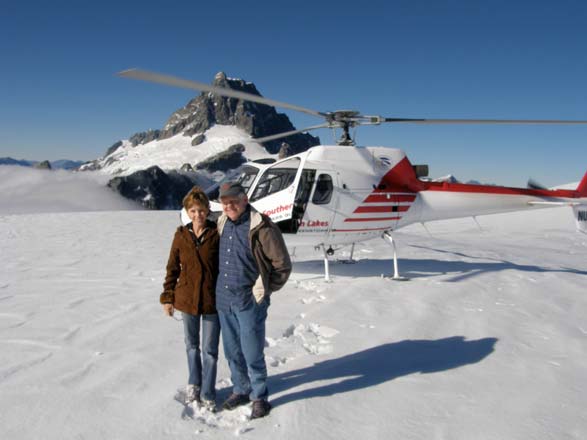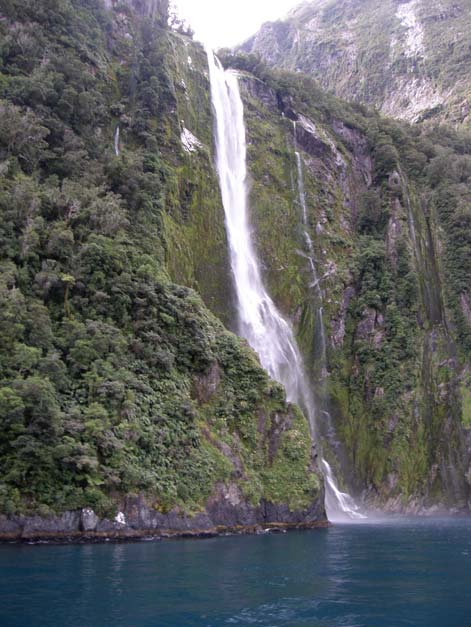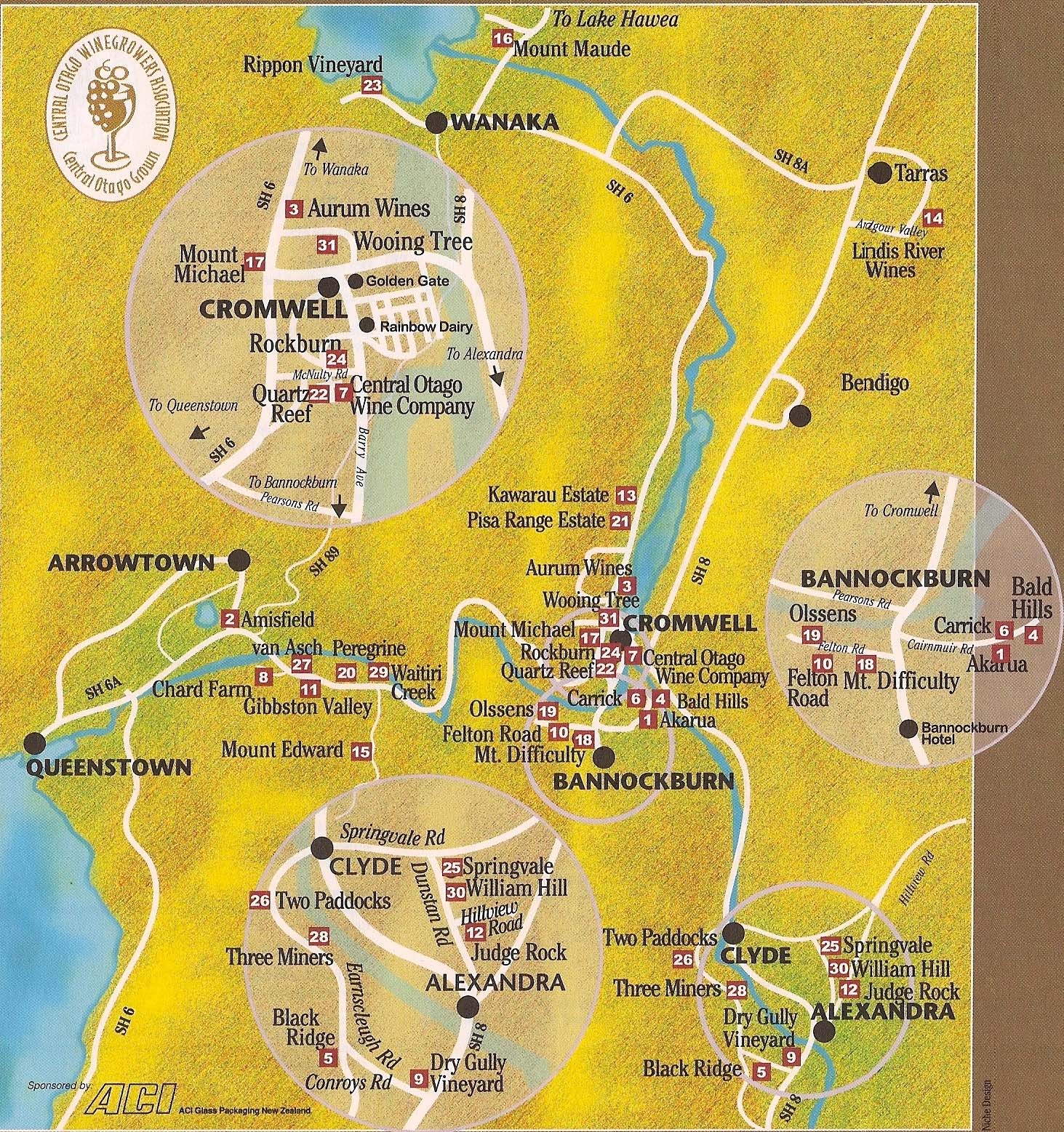Central Otago
Central Otago’s viticultural history began with John Desire Feraud, who was attracted to the area during the
Dunstan gold rush of 1862. Feraud came from a French winemaking family, quickly recognized the potential of
the area for grape growing, and planted the first wine grapes in Central Otago in 1864. Over the next twenty
years he made a variety of wines, some winning prizes in Sydney wine competitions. When he left the region,
commercial winemaking ceased and wasn’t revived until experimental plantings were farmed by Rolfe Mills in
1975 in the Wanaka area. Mills later planted the Rippon Vineyard in 1982, the first commercial vineyard in
Central Otago since the gold rush days. The first commercial release of Pinot Noir from Central Otago was the
1987 vintage from pioneer Alan Brady at Gibbston Valley Winery. Other early pioneering wineries include
Taramea, Black Ridge, William Hill and Chard Farm. Felton Road was the first major vineyard and winery in
Central Otago (established in 1991), and by 1997 was releasing wines that were startling, bringing international
attention and notoriety to Central Otago.
Central Otago is the most southerly wine region in the world located at 45-47 degrees latitude, the same
latitude as Burgundy and Oregon’s Willamette Valley in the northern hemisphere. It the fastest growing wine
district in New Zealand. In 1997, there were only 500 acres of vines and 14 wineries in Central Otago. By 2007,
there were 89 wineries and more than 4,000 acres planted to vines, at least 70% of it Pinot Noir. Because of its
inland location and significant distance from the ocean, its climate is continental. Snowcapped mountains are
a prominent part of the landscape in winter, but the sun shines brightly during the summer and autumn. Very
little rain falls in Central Otago per se, but the surrounding country is quite wet so that water is readily available.
Milford Sound, which is only an hour helicopter ride away, is the wettest place on Earth receiving around 28
feet of rain per year! Central Otago wine country is the closest thing to a desert in New Zealand.
Milford Sound, of course is one of the natural wonders of the world and must be experienced by anyone
traveling to Central Otago. On our trip in April, my wife and I took a helicopter ride to the Sound, followed by a
boat ride along the scenic water inlet. I must say, this was the most breathtaking scenery I have ever laid eyes
on. The photos below show us after landing on a glacier at 7,000 feet and later taking in the steep cliffs dotted
with waterfalls along both sides of the Sound.
Pinot Noir thrives in Central Otago because even though the growing season is not lengthy, the absence of a
wet maritime influence allows tannins to ripen and acidity to be retained without sugars becoming excessive.
The river silts, clays, loams and sands that make up the soils are interspersed with ground schist rocks and are
therefore free draining. The low rainfall has kept leaching effects low, so there is a good level of mineral
compounds present, but low rainfall has restricted plant growth, so the organic content of the soil is low. The
result is soil low in vigor, but high in minerality. Irrigation is a necessity and is finely tuned to keep the vines
tuned to the desired degree of stress. The winters are cold and dry with snow not unusual on the flatlands, and
a constant threat of spring frost is present. The low humidity and low rainfall greatly reduces Botrytis pressure.
Large diurnal shifts are the norm.
There are six subregions in Central Otago’s rugged mountain landscape and all have distinctive microclimates.
Lowburn, Bendigo, and Bannockburn are part of the Cromwell basin which accounts for 70% of the region’s
vineyards. Gibbston is closest to Queenstown and here plantings are found on terraces above the Kawarau
Gorge. The remainder of the vines are located in Alexandra, the most southerly subregion, and around
Wanaka in the North. About half of the Pinot Noir produced in Central Otago is made by wineries or by
cooperatives, while the other half is put into Central Otago blends. The largest winemaking contractor in
Central Otago is the Central Otago Wine Company where master winemaker, Dean Shaw, produces wine
according to each label’s specifications.





